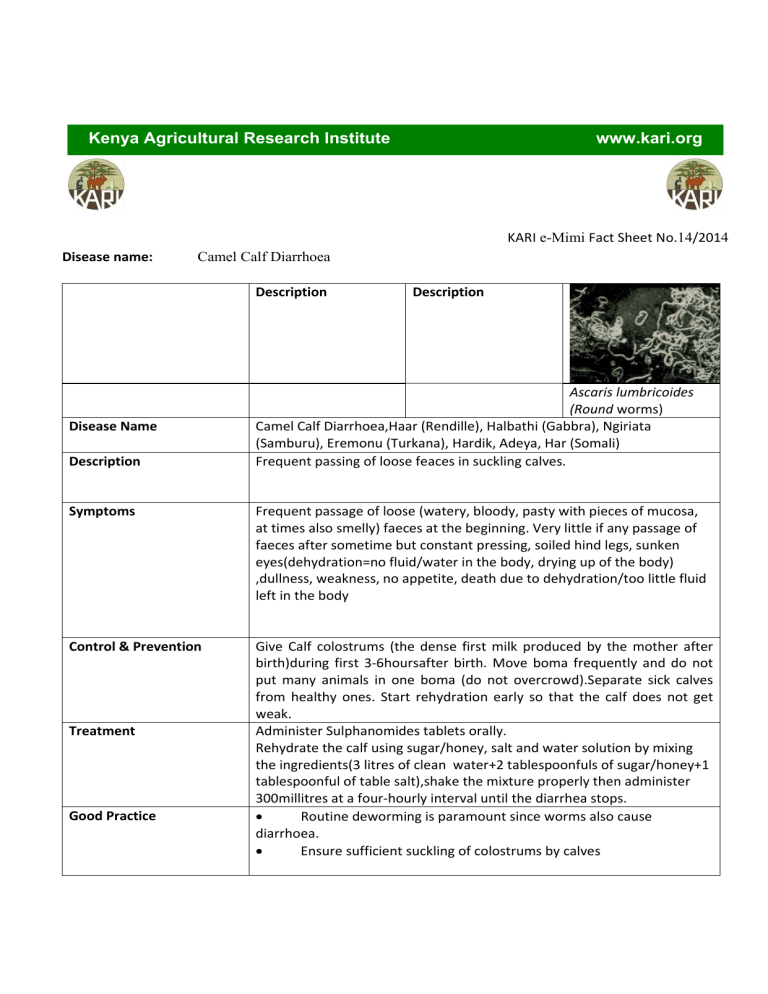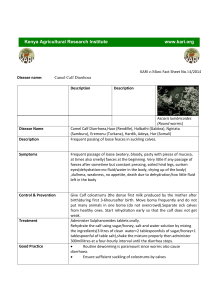
Kenya Agricultural Research Institute www.kari.org KARI e-Mimi Fact Sheet No.14/2014 Disease name: Camel Calf Diarrhoea Description Disease Name Description Description Ascaris lumbricoides (Round worms) Camel Calf Diarrhoea,Haar (Rendille), Halbathi (Gabbra), Ngiriata (Samburu), Eremonu (Turkana), Hardik, Adeya, Har (Somali) Frequent passing of loose feaces in suckling calves. Symptoms Frequent passage of loose (watery, bloody, pasty with pieces of mucosa, at times also smelly) faeces at the beginning. Very little if any passage of faeces after sometime but constant pressing, soiled hind legs, sunken eyes(dehydration=no fluid/water in the body, drying up of the body) ,dullness, weakness, no appetite, death due to dehydration/too little fluid left in the body Control & Prevention Give Calf colostrums (the dense first milk produced by the mother after birth)during first 3‐6hoursafter birth. Move boma frequently and do not put many animals in one boma (do not overcrowd).Separate sick calves from healthy ones. Start rehydration early so that the calf does not get weak. Administer Sulphanomides tablets orally. Rehydrate the calf using sugar/honey, salt and water solution by mixing the ingredients(3 litres of clean water+2 tablespoonfuls of sugar/honey+1 tablespoonful of table salt),shake the mixture properly then administer 300millitres at a four‐hourly interval until the diarrhea stops. Routine deworming is paramount since worms also cause diarrhoea. Ensure sufficient suckling of colostrums by calves Treatment Good Practice Special Instructions Avoid feeding the calf on contaminated feed and water sources. Mandate/ referral Centres Reference Links – book, journal paper, magazine, brochure, bulletin, fact sheet, web etc Geographic Coverage Marsabit, Garissa. Camel Manual For Service Providers: Kenya Camel Association, Kenya Agricultural Research Institute, Ministry Of Livestock Development and VSF‐Suisse The geographical coverage includes all the Arid and Semi‐Arid parts of Kenya where Camels are kept; Garissa, Mandera, Wajir, Marsabit, West Pokot, Samburu, Machakos, Kitui, Taita Include map of Kenya with counties (use dots to show disease /pest occurrence) 2



